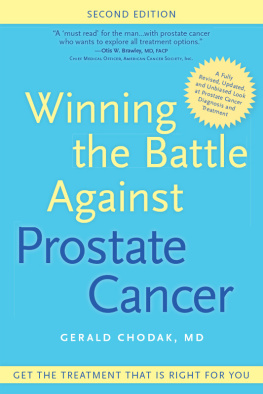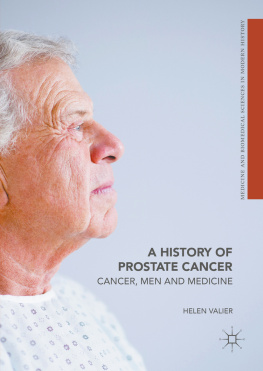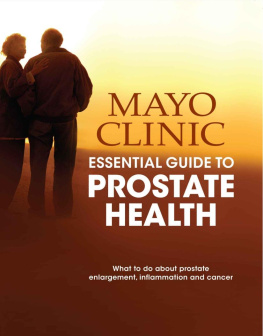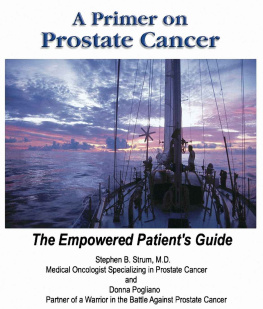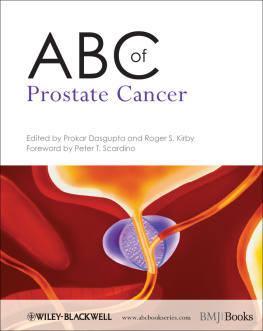The Great Prostate Hoax
The Great Prostate Hoax
How Big Medicine Hijacked the PSA Test and Caused a Public Health Disaster
Richard J. Ablin, P h D
with Ronald Piana

The author and publisher have provided this e-book to you for your personal use only. You may not make this e-book publicly available in any way. Copyright infringement is against the law. If you believe the copy of this e-book you are reading infringes on the authors copyright, please notify the publisher at: us.macmillanusa.com/piracy.
THE GREAT PROSTATE HOAX
Copyright Richard J. Ablin and Ronald Piana, 2014.
All rights reserved.
For information, address St. Martins Press, 175 Fifth Avenue, New York, N.Y. 10010.
First published in 2014 by PALGRAVE MACMILLAN in the United Statesa division of St. Martins Press LLC, 175 Fifth Avenue, New York, NY 10010.
ISBN 978-1-137-27874-6
Our eBooks may be purchased in bulk for promotional, educational, or business use. Please contact the Macmillan Corporate and Premium Sales Department at 1-800-221-7945, ext. 5442, or by e-mail at .
Library of Congress Cataloging-in-Publication Data
Ablin, Richard J., 1940 author.
The great prostate hoax : how big medicine hijacked the PSA test and caused a public health disaster / by Richard J. Ablin, with Ronald Piana.
p. ; cm.
Includes bibliographical references.
ISBN 978-1-137-27874-6 (alk. paper)
I. Piana, Ron, author. II. Title.
[DNLM: 1. Prostate-Specific Antigenadverse effectsUnited States. 2. Prostatic NeoplasmsdiagnosisUnited States. 3. Early Detection of Canceradverse effectsUnited States. 4. History, 20th CenturyUnited States. 5. History, 21st CenturyUnited States. 6. Prostate-Specific AntigenhistoryUnited States. WJ 762]
RC280.P7
362.19699463dc23
2013030332
A catalogue record of the book is available from the British Library.
Design by Letra Libre, Inc.
First edition: March 2014
10 9 8 7 6 5 4 3 2 1
Printed in the United States of America.
For the countless millions of men and their families who have
suffered needlessly because of
the misuse of the PSA Test
Contents
Acknowledgments
I n the course of writing this book, I have often reflected on the years and events that have passed since I first began my research on the prostate in 1968. Books such as this are built with the help, in one way or another, of numerous people. My wife, Linda, who has been my sounding board for 50 years, warned me not to name names in the likelihood that someone will be overlooked. Nonetheless, its a risk I need to take. However, if I have omitted you, please understand it was unintentional.
Initially, I must acknowledge the late Ward A. Soanes, MD, who provided me with the wherewithal to pursue my early investigative studies of the prostate. Some years later, 25 in fact, I met Fred Lee, MD, who on introducing me to the late William Cooner, MD, said, Bill, this is the guy who discovered prostate-specific antigen [PSA].... Together with the support of Hope T. M. Ritter Jr., PhD (my graduate school professor), Phil Gold, MD, PhD, and the late Lloyd J. Ney Sr., PhD (founder of Patient Advocates for Advanced Cancer Treatments), my discovery of PSA in 1970 was brought to the attention of the biomedical community. Through the intervening years, Eugene V. Genovesi, PhD, Phil Gold, MD, PhD, Mark R. Haythorn, MS, the late John Marchalonis, PhD, Samuel Schluter, PhD, and Terry C. Whyard, MA, have also served as sounding boards for innumerable discussions on PSA. Haythorn, in addition, has been an invaluable resource in keeping me abreast of pertinent biomedical literature. Suzanne B. Connolly, BS, has played a vital role in the preparation of countless audiovisual presentations on my research. And, for those who find this book a compelling and informed read, you owe a debt of gratitude to my son, Michael, who for 17 years has relentlessly urged me to get out the truth on the ongoing health care disaster. To accomplish this task, I was most fortunate to have the writing expertise of Ronald Piana. I would also like to acknowledge my colleagues at the University of Arizona College of Medicine and all the interviewees listed in the Appendix. Last, but certainly not least, I wish to thank Karen A. Wolny, Editorial Director at Palgrave Macmillan and her staff for their skilled guidance in publishing this book and finally getting the truth out.
Richard J. Ablin, PhD
Introduction
Hes the best physician that knows the worthlessness of most medicines.
Benjamin Franklin
I wrote this book, in part, as an apology to a man Ive never met. Lets call him John, a robust 51-year-old living on a tree-lined street with his wife and kids. He was secretly enjoying the rollercoaster ride of a midlife crisisa new Corvette, adventurous lovemaking, ice climbing in New Zealand. Then it happened. During Johns yearly physical, his blood work revealed a slightly elevated level of prostate-specific antigen (PSA), an arbitrary indicator of an abnormality in the prostate gland. (The prostate is a gland whose main function is to secrete an alkaline fluid that is an important part of the semen that carries sperm.) After a few clichd remarks about guideline recommendations, Johns primary care physician sent him to a urologistthe doctor-to-doctor handoff that can inadvertently turn men into unwitting victims of a system that may do more harm than good. Why did John enter that system without understanding the life-changing consequences? And how did the misuse of a simple blood test become the engine for a multibillion-dollar industry?
The PSA blood test is used:
- to aid doctors in treating men who already have prostate cancer and to identify the recurrence of prostate cancer following treatment, and
- as a screening test in healthy men to help detect prostate cancer.
This book concerns the misuse of the PSA test for screening healthy men.
These are some of the questions that I seek to answer. Also, while I was writing this book, several influential organizations, notably the American Urological Association (AUA), Given my intimate knowledge of the prostate industry, Im not confident that this medical dtente by the AUA will have a significant effect on the continued misuse of PSA. There are dozens of new-generation PSA tests currently being developed, which is simply a more techy way to keep the prostate business rolling full steam ahead. But you cant wash your hands of 30 years of guilt and walk away. This book will also hold those responsible for this human calamity accountable.
Back to John.
Despite the fact that John had no family history of prostate cancer, the urologist advised a better-safe-than-sorry approach and scheduled John for a biopsy. Under local anesthesia, multiple 18-gauge needles were inserted through the skin between his scrotum and rectum and into his prostate gland, punching out core tissue samples. Aside from significant discomfort, this routine procedure can hospitalize men with serious infections and bleeding. Although nervous, John and his wife remained cautiously optimistic as they waited for the pathology report. Johns mind, however, went on autopilot, plumbing the dark sectors of worst-case scenarios.
When the urologist finally called, the dreaded word cancer jolted John into a mind-numbing world of prognosis, extent of cancer, and therapeutic options. The urologists voice became decidedly upbeat as he informed John that the cancer was confined to the prostate gland. This was good news. Like most prostate cancers, it was probably a turtle, not a rabbit (well get to that later in the book). But John was only 51. He wanted the best possible shot at another 30 years; after all, he had plans. His wife panicked as the urologist droned on and on with buoyant pronouncements about survival data and better surgical techniques. At one point, she clasped her husbands hand and blurted, Cut it out. We want the cancer gone. John emphatically agreed.
Next page




